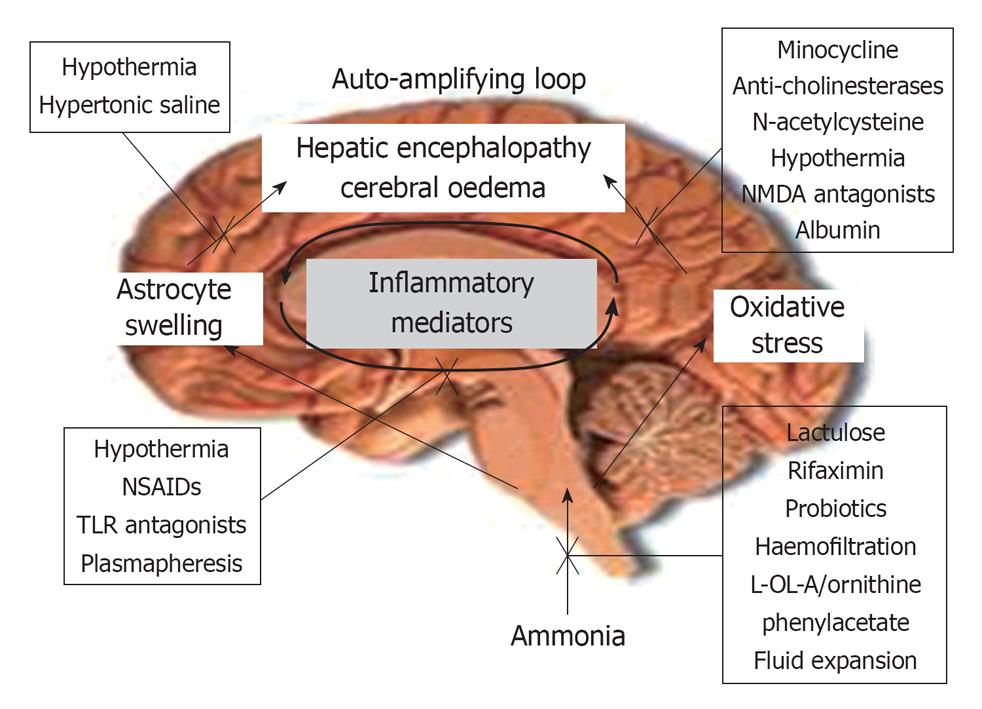Copyright
©2010 Baishideng.
World J Gastroenterol. Jul 21, 2010; 16(27): 3347-3357
Published online Jul 21, 2010. doi: 10.3748/wjg.v16.i27.3347
Published online Jul 21, 2010. doi: 10.3748/wjg.v16.i27.3347
Figure 1 The “Two-hit” hypothesis.
In a background of liver injury and hyperammonemia, a second “hit”, such as an ammonia load following an upper gastrointestinal bleed, systemic inflammation/infection, or the development of hyponatremia can drive further astrocyte swelling, oxidative stress and lead to a rapid deterioration in neurocognitive function. The close relationship between astrocyte swelling and oxidative stress leads to an “auto-amplifying signalling loop”. The sites of action of potential therapies are indicated on the Figure. L-OL-A: L-ornithine L aspartate; NMDA: N-methyl D-aspartate; NSAID: Non-steroidal anti-inflammatory; TLR: Toll-like receptor.
- Citation: Seyan AS, Hughes RD, Shawcross DL. Changing face of hepatic encephalopathy: Role of inflammation and oxidative stress. World J Gastroenterol 2010; 16(27): 3347-3357
- URL: https://www.wjgnet.com/1007-9327/full/v16/i27/3347.htm
- DOI: https://dx.doi.org/10.3748/wjg.v16.i27.3347









